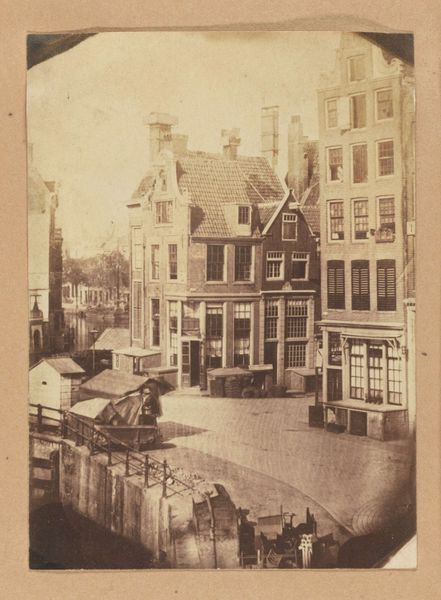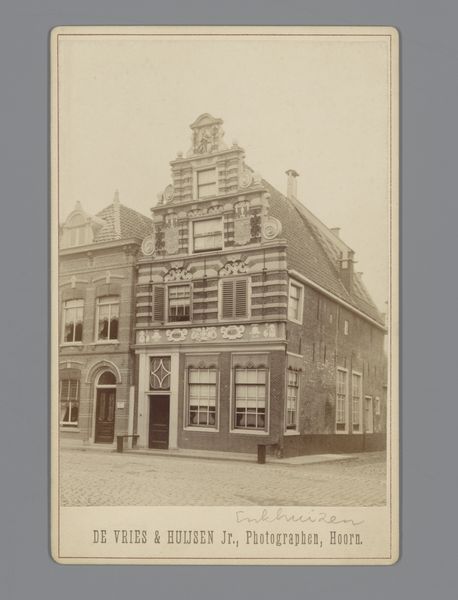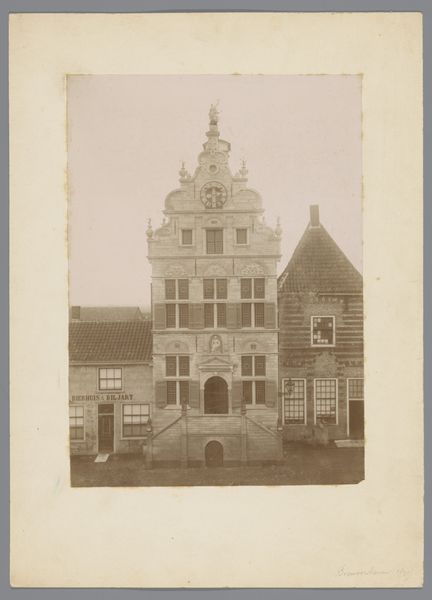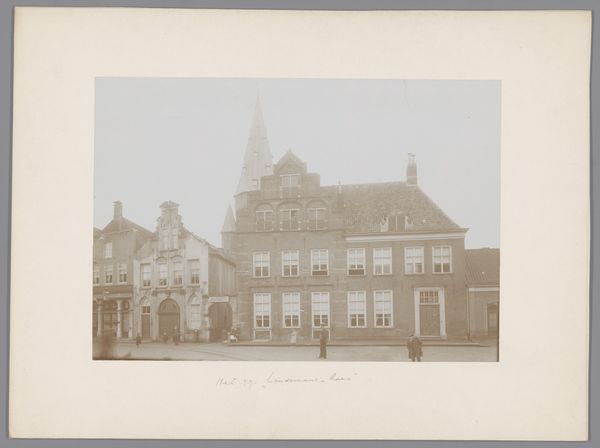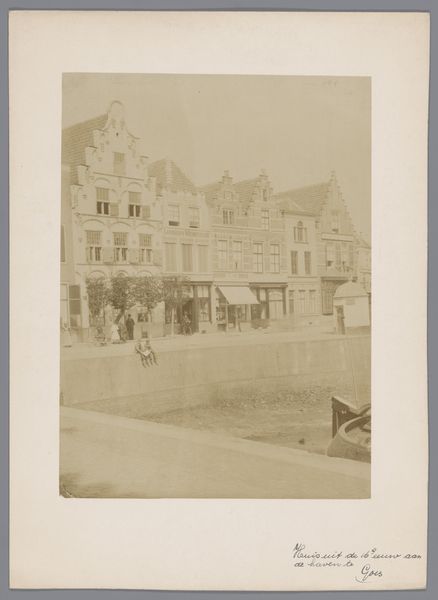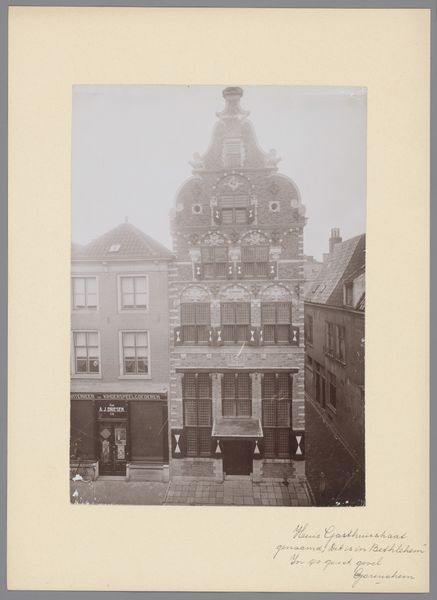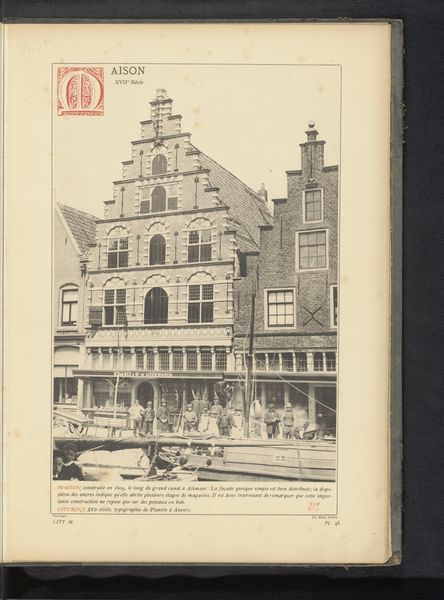
Studentensociëteit Nos Jungit Amicitia gedurende de lustrumfeesten 1892
0:00
0:00
print, photography, albumen-print
#
dutch-golden-age
# print
#
photography
#
historical photography
#
cityscape
#
albumen-print
Dimensions: height 108 mm, width 80 mm
Copyright: Rijks Museum: Open Domain
Curator: This albumen print, taken in 1892 by Hendrik Herman van den Berg, captures the Studentensociëteit Nos Jungit Amicitia during its lustrum celebrations. What are your first impressions? Editor: A melancholic architectural portrait, bathed in sepia tones. The ornate pavilion seems almost otherworldly, given the ordinary buildings surrounding it. What’s particularly interesting is the layering of architectural motifs, from the building façades in the background to the structure itself, creating a unique material and visual density. Curator: Indeed. Albumen prints, popular in the late 19th century, involved coating paper with egg whites before applying the photographic emulsion. The choice of this medium certainly imbues the scene with a sense of bygone elegance. And notice how the lustrum, the society's quinquennial celebration, would have served as a potent reminder of time, tradition, and brotherhood—the photograph serving as a symbol of those values perpetuated. Editor: And it would have been a carefully constructed tradition, I suspect. Look at the pavilion's elaborate construction; surely that wasn't erected spontaneously! Someone labored to design, build, and decorate this temporary structure, signaling the temporary but real elevation of the student life, literally elevated from the waterline, where that labor can still be imagined from the contemporary viewers' gaze. Curator: The society's motto, "Nos Jungit Amicitia"—friendship unites us—is prominently displayed. Friendship and fraternal connection would have been seen as the mortar holding society together during that time. It becomes quite obvious why the selection of ornaments tends toward the palatial and exotic. Editor: And that's what raises questions for me: the purpose, consumption, and means of that ornamentation in late 19th-century Holland. It is a staged construction that would have quickly disappeared soon after it served its purpose, highlighting the transience and labor needed to fulfill the requirements of upper-class ritualism. Curator: A fascinating lens through which to view this photograph. It's an image rich with social, historical, and material textures. Editor: Agreed. What seemed like a straightforward historical photograph reveals hidden stories and tensions with closer examination.
Comments
No comments
Be the first to comment and join the conversation on the ultimate creative platform.
